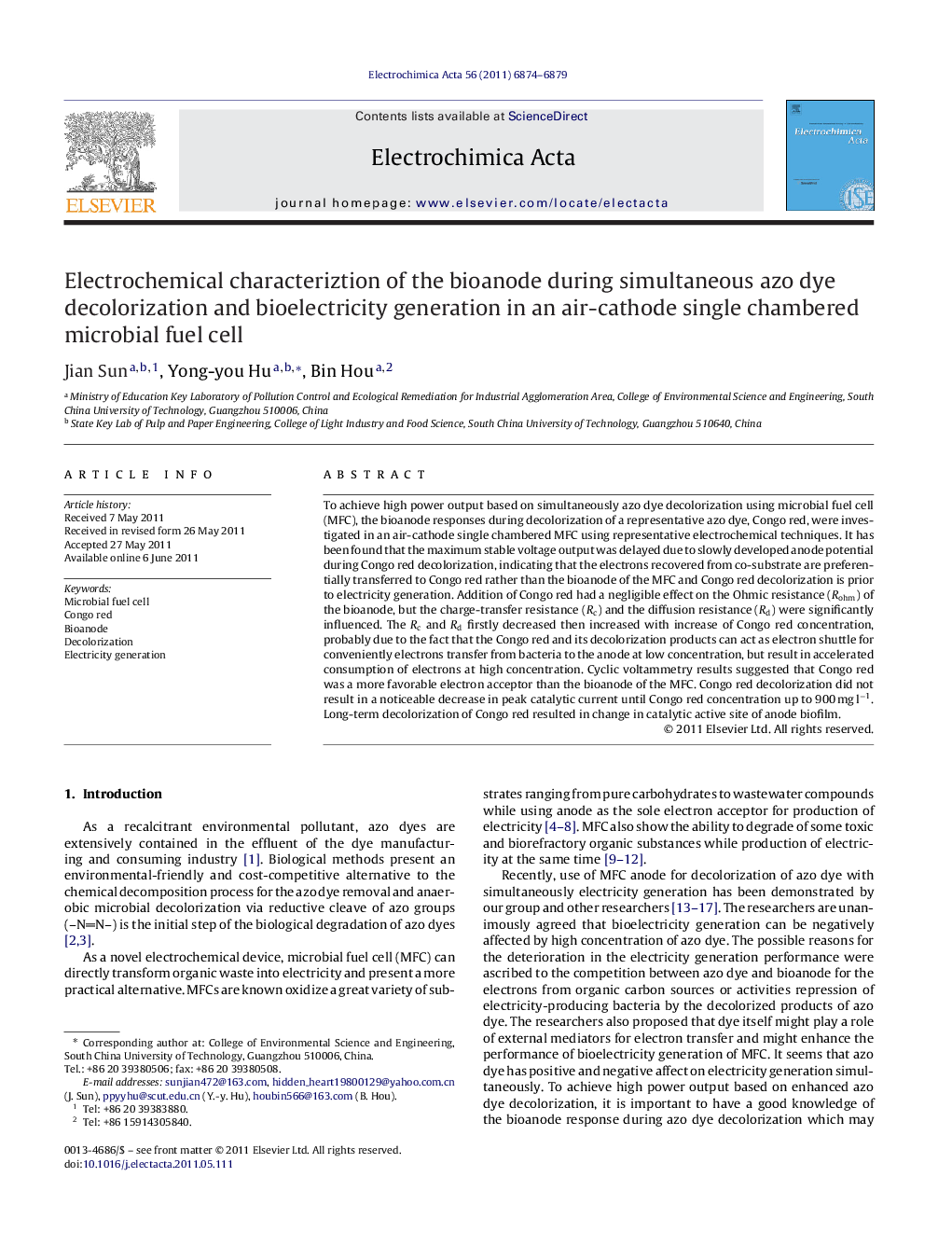| Article ID | Journal | Published Year | Pages | File Type |
|---|---|---|---|---|
| 189568 | Electrochimica Acta | 2011 | 6 Pages |
To achieve high power output based on simultaneously azo dye decolorization using microbial fuel cell (MFC), the bioanode responses during decolorization of a representative azo dye, Congo red, were investigated in an air-cathode single chambered MFC using representative electrochemical techniques. It has been found that the maximum stable voltage output was delayed due to slowly developed anode potential during Congo red decolorization, indicating that the electrons recovered from co-substrate are preferentially transferred to Congo red rather than the bioanode of the MFC and Congo red decolorization is prior to electricity generation. Addition of Congo red had a negligible effect on the Ohmic resistance (Rohm) of the bioanode, but the charge-transfer resistance (Rc) and the diffusion resistance (Rd) were significantly influenced. The Rc and Rd firstly decreased then increased with increase of Congo red concentration, probably due to the fact that the Congo red and its decolorization products can act as electron shuttle for conveniently electrons transfer from bacteria to the anode at low concentration, but result in accelerated consumption of electrons at high concentration. Cyclic voltammetry results suggested that Congo red was a more favorable electron acceptor than the bioanode of the MFC. Congo red decolorization did not result in a noticeable decrease in peak catalytic current until Congo red concentration up to 900 mg l−1. Long-term decolorization of Congo red resulted in change in catalytic active site of anode biofilm.
